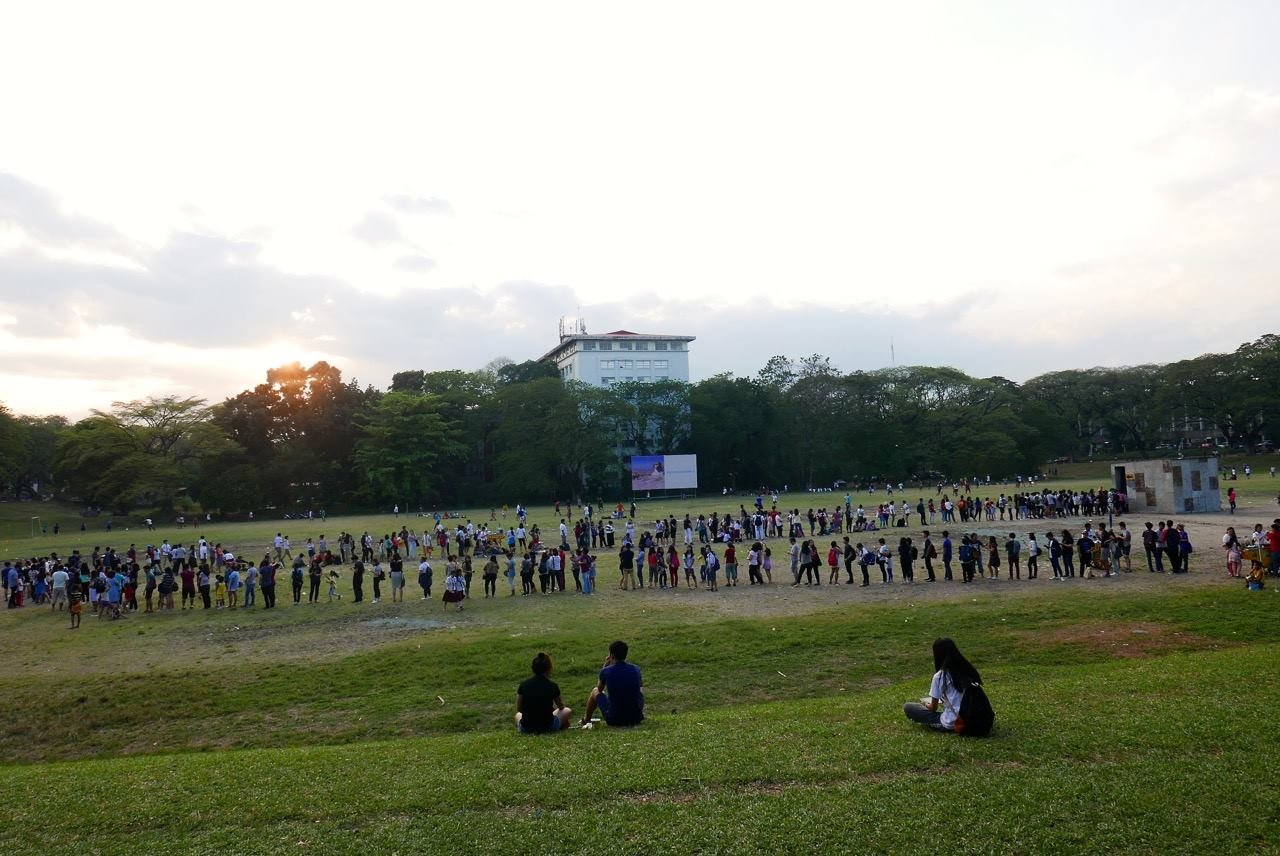
The Settlement
Here's a peek into this immersive installation, as well as an explanation of what, in my view, it is all about (which may not necessarily be the artist's own view of it).
The Settlement will be set up like a barong barong (shanty / makeshift dwelling). It will be remarkable only because it will seem like it does not belong in the Museum. It will stand in stark contrast to the museum land, as well as to what’s inside this barong barong.
As you enter, this is the first piece you'll see, a small "retablo" or altarpiece with an endless pile of pandesal and sardine cans.
It's supposed to call to mind the miracle of the multiplication of the bread and fish, symbolizing the very basic and simple dreams of the people.
Turning right into the main room itself, people inevitably stop and are unable to enter right away.
At the far end is an endless tunnel, but the thing that stops most is the bottomless pit that covers the whole floor.
Many will ask - is it safe to walk on? (Yes, it's made of 3 layers of thick tempered glass).
It represents our foundation as a society, which might just be an illusion. It also is supposed to get us thinking about our views of history, given recent attempts to rewrite it. Are we unearthing history? Or are we burying it?
The sides of the floor are also filled with artifacts, icons, and reminders of great struggle in our history. Like a Bell of Balanggiga. Or bullets and bombs. Or the Great Books. And the double-edged power of writers and documents.
Meanwhile, to your left is Andres Bonifacio and a Manananggal (or a Manananggol, as Mark prefers to call it). Bonifacio represents history, as well as the common Filipino and his/her struggles, dreams and aspirations. The Mananganggol, as a counterpoint to Bonifacio's standing as a symbol of Philippine history, represents mythology.
To your right is Aguinaldo Hall in Malacanang Palace. if you look closely, you should see the ghost of Andres Bonifacio inside the room.
To bring people across the floor and into the tunnel, it seems that we need to create myths, stories, narratives. They have to be sold on a Vision, which may be grounded in history and fact, or only in myth.
Either way, we need to convince people to take a leap of faith.
Together with the symbol that is Malacanang Palace, they represent the conflicting powers vying for the peoples' support and commitment.
The tunnel at the far side symbolizes change - but we don't really know where it leads. People want to go through the tunnel - even if the destination is unknown - because they're not happy with the present.
The irony is that before they can even get to the tunnel, they have to find the courage to cross the bottomless floor.
One other thing about the tunnel - it veers to the left. Make of that what you will.
The Settlement has always been one of our most popular installations. It has been shown in several venues, including the Sunken Garden in UP Diliman, the Ayala Museum, at the Arete in Ateneo, and in Bangkok, Thailand.
Shown here is the scene from a day in UP. If you had been at the end of the line, it would have taken more than four hours to enter The Settlement. And by all accounts, it would have been worth the wait!
